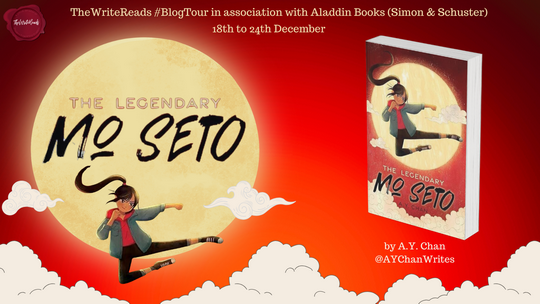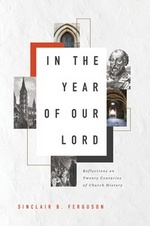 Ghost Stations
Ghost Stations
by M.D. Presley
DETAILS: Series: The Inner Circle, #2 Publication Date: December 10, 2024 Format: eARC Length: 396 pg. Read Date: December 11-16, 2024

What’s Ghost Stations About?
New York City is a bit much for Corbin—he’s more than out of his element (a status he’s getting used to after running from the cult he’d pretty much been raised in, finding himself in a strange world of magicians and magician factions). But this is where the task that Mister is set to tackle. There’s a new drug variant floating around in parts of the US that affects magicians in a dangerous way. The Circle can turn a blind eye to the standard version of the drug, but this new form is a step too far.
Kirin, meanwhile, is back home. A place she hadn’t expected to see for some time yet. Her family is here—with all the interfamily and intrafamily dynamics and politics that brings. As are her friends—that found family established in her teen years that seems tighter than blood. Corbin gets shunted off with them to stay out of the way while Mister and Isaac get into it.
It doesn’t take long for Kirin’s group to decide that they’re supposed to be sticking their noses into it anyway—and what else to they have to do? So, they seek out a source for this drug—they know someone who can do the right kind of analysis on it to see how it was made. The figure if they can get that information, they can trace it to the source.
While dealing with this, Corbin has to learn to navigate the powerful families that make up the Circle, the strange subcultures of magic in NYC, and the strangest challenge of them all—interpersonal relationships. Colin was never equipped to handle life outside the cult—to be thrown into the intense world of twenty-somethings with too much money, drugs, alcohol, and hormones flying around. (sure the drugs and the magic and the danger are the more pressing things—but Colin and handle that)
The Little More of the World
In Rites of Passage, we were told about the Circle—the group that runs the world of magic in the States—at least in the major population centers, while other areas have more of a local group controlling them. I’m not going to say that after this, the reader will understand the Circle and how it operates fully. But we get an idea—a good look at it.
And honestly, it’s not that pretty.
I think that The Inner Circle, like Jacka’s Stephen Oakwood, is doing a good thing in Urban Fantasy—a new thing, too. Where most Urban Fantasy deals with magic/groups in terms of detectives/police vs. criminal acts and structures (either organized crime or werewolf packs that act like motorcycle gangs). Presley and Jacka are presenting us with “legitimate” sources of power—economic elites.
In these worlds, it’s the 1% of the magic world (which is already an elite caste of sorts) that holds the power. Not only does this allow Presley, Jacka, and (I assume) others I am not thinking of/haven’t been exposed to comment on a rising oligarchy and the power of these elites. But it gives the reader a handy way to think about these things without getting too tied up in contemporary political labels or societal movements.
As Mister, Isaac, and Corbin keep traveling the country, I look forward to seeing other ways that this is shown and dissected.
So, what did I think about Ghost Stations?
All that aside—this is just a rollicking story. Most of the things I really want to talk about are spoilers (the way the drug works, the people that Corbin meets and makes deals with, and so on).
The change of setting—and the promise of more settings to come—helped this seem very fresh compared to the first, and should do the same for the following books (it’s the second, the series is obviously still fresh, it’s more of the promise here). And Corbin not understanding much of how this world he’s in now works, allows Presley to inform the reader while maintaining the story’s momentum. His cluelessness allows us to be. New case, new setting, Corbin and the reader both get to learn a lot. Thankfully, we readers are safe from whatever magic whammy is threatening our dowser.
As before, his magic helps. But it’s Corbin’s instincts, his watchfulness—even his outsiderness—that help him to get where he needs to go. While watching someone sling magic is always fun, it’s the guys like Dresden, Alex Verus, Mercy Thompson, and Corbin that really make a series like this work.
I liked most of the world we got to see—I wouldn’t want to live in this NYC (or any other, to be honest), but it was interesting. Her brother seemed cool and her friend TJ was someone I hope we see soon. The other member of her group was generally a tool who’d be a great antagonist in an 80s teen movie. Still, he was a good example of the type. Everyone else we met? Fascinating. Presley seems incapable of creating a dull character (even if we only see them for a chapter).
Ghost Stations is a solid follow-up with a great hook, a better world to explore, and enough turns and twists to keep you engaged from the creepy start to the satisfying conclusion and all points between.
I’m eager to see where the next novel takes us, but for now, I just want to encourage you to pick this one up.
Disclaimer: I received this eARC from the author in exchange for this post and my honest opinion—which I’ve delivered above.

This post contains an affiliate link. If you purchase from it, I will get a small commission at no additional cost to you. As always, the opinions expressed are my own.
![]()









 The seeds of this book were first published in a book Ferguson co-authored called, Church History 101: The Highlights of Twenty Centuries — he’s now taken those chapters, done more research (being retired has freed up some time for him to do some reading), and expanded that into this great survey of Church History.
The seeds of this book were first published in a book Ferguson co-authored called, Church History 101: The Highlights of Twenty Centuries — he’s now taken those chapters, done more research (being retired has freed up some time for him to do some reading), and expanded that into this great survey of Church History.

 Every time Cunk looks at non-English speaking cultures was a win.
Every time Cunk looks at non-English speaking cultures was a win.
